Promoting Innovative Agroecology Models and Mechanisms for Conservation of Carbon Stocks Within the Savannah Landscapes in Wakawaka
Wakawaka and its surrounding communities within the Bole district are largely farmers. shea nut traders, game hunting, commercial firewood production, and among others. The mainstay of these rural communities is rain-fed agriculture which is worst affected by climate change due to erratic rainfalls and a shrinking growing season length. Increased deforestation and forest degradation as a result of unsustainable farming practices, slash and burn, agriculture expansion, unsustainable charcoal and fuelwood production, fire hunting, among others further push the communities into the shackles of poverty. There are growing concerns about total crop losses and low yields due to declining soil fertility and dry spells.
In order to lessen environmental degradation and reduce poverty levels in the target project communities arising from climate change, Agrointroductions Ghana (AiG) with the funding support of UNDP Global Environmental Facility Small Grant Program and local partners like Ministry of Food and Agriculture, Forestry Commission, local authorities and community groups skillfully employed integrated approach (stakeholder collaborations, capacity building, education and awareness creation, field school exercises, alternative livelihood provision, village savings and loans scheme and climate-smart agriculture, woodlot establishment and many more) for this very project to enable the project communities to cope and show resilience to the cold grips of climate change whilst minimizing carbon footprint.
Within a period of 24 months, the project has recorded the following successes and achievements with the collaborative support of all our project partners and stakeholders.
A total of 55 direct project beneficiaries and 72 community members were successfully introduced to climate-smart agriculture. The beneficiaries were trained and subscribed onto up-to-date mobile weather forecasts throughout the project period and beyond to receive farming-related weather updates every week.
Another successful and impactful component was introducing local farmers to conservation agriculture (minimum tillage/soil disturbance, mulching, trees on farms/trees as farm boundaries). All beneficiaries who applied this new concept of conservation farming confessed there was an increase in yield. They only found it very challenging and demanding to use the entire conservation agriculture concept on large-scale bases. Farmer beneficiaries were also supported with 2 bags of organic fertilizer (Sulphate of ammonia) each and technical guides for fertilizer application.
For the first time in the Bole district, our project trained 12 agriculture extension officers and 16 community-based agricultural extension agents on how to use New_Loclim Software (by FAO) for climate change mitigation and adaptation modeling such as early warning and crises mapping. They were also trained in climate-smart agriculture, integrated soil fertility management and how to effectively relay technical information to farmers within the district.
The project saw another remarkable achievement with its livelihood diversification program. We successfully trained and supported 30 women in vegetable farming, agroforestry, savings and loans, start-up seed fund for small businesses (15 women supported), lay cookstove making and fuel briquettes. The project also established a poultry farm starting with 250 birds as a demonstration center to train locals who want to invest in poultry farming. The rippling benefits of the poultry project have inspired some project beneficiaries to start their own private poultry for commercial purpose.
Our sensitization of communities, schools, and local authorities on climate change, deforestation, bush fires, and biodiversity conservation achieved maximum participation from target groups. Over 200 school children were educated; school environmental club was established, night and day community meetings were carried out in all target communities. We also conducted a series of radio education on wildfires, climate change and Fulani herdsman invasion and control and deforestation in local dialects
The purposes of enhancement of carbon stocks (afforestation and community woodlots), the beneficiaries were trained in planting indigenous tree (mahogany and cassia) and cash-crop (cashew) seedling establishment and management. After the training, they were guided to establish a community seedling bank and community woodlot plantation comprising of over 6000 trees and over 5000 cashew trees in their various farms and school compound. A motor tricycle was also procured for the project community to enhance the movement of seedlings and other related logistics
PROJECT IMPACT
- Youth Involvement
Youth involvement was very key to the success of our project. As such the project increased the ability of youth to participate effectively in the project activities. Youth groups who formed about 60% of the project beneficiaries were given equal opportunities to engage in all aspect of the project implementation, monitoring, and sustainability. A major success story was that the project ensured equity of treatment in respect of access to project resources and decision-making.
- Community Involvement
Community management groups and institutions were created and strengthened to support management of the project in achieving results. We improved community participation and involvement in the project by designing a road map to ensure broad stakeholders implementation of the project. The project considered significant roles to be played by communities in the project management and sustainability process. Selected beneficiaries were given the requisite training to enable their participation in the project monitoring and evaluation.
- Sustainable Livelihoods
The project has created sustainable livelihood investment opportunities for the beneficiaries, and this was achieved through the mobilization of the beneficiary communities to undertake selected livelihood enterprises. The livelihood interventions included the promotion of income-generating activities such as poultry farming, vegetable farming, cash crop farming (cashew), a micro-credit scheme for women groups and fuel-efficient cookstove making. Technical support and funds were made available as start-up for livelihood ventures that were administered in consultation with beneficiaries thereby ensuring ownership, increasing commitment, and ensuring the success of the activities. Special consideration was given to gender, especially vulnerable women. The services of consultants, local partners, business and investment consultants and other related investment services were sought to identify specific needs.
- Capacity Building
As part of the project components, the organization undertook capacity building and trainings for the beneficiaries with the objective of enhancing knowledge, shape and sharpen the skills of the beneficiaries in the areas of wildfire prevention and management, cashew nursery establishment and grafting, poultry farm management and trainings on use of improved fuel-efficient cookstoves, the use and preparations of Charcoal Briquette and how to make improved fuel-efficient cookstoves.
Training I
A farmer field school was instituted to train the beneficiaries on climate-smart agriculture and integrated soil fertility management. MOFA agents with the support of AiG staffs led this. For effective training and impact, each trust group was assigned different days for the training and field demonstrations. The results of these could be seen on the farms of the beneficiaries as technologies were adopted. The beneficiary trainees were also encouraged to serve as trainers for others who are not direct beneficiaries of the project.
Training II
A total of 45 farmers were trained on how to subscribe to and read weather information on mobile phones through ISKA weather. Preceding this was education on the need for such a service of which many of those present showed interest in. Twenty-two farmers successfully subscribed to the ISKA Weather services after demonstrations with the 5 phones provided for the 5 member LIT on the day of the training. Moreover, there was a rush for subscription by those who were reluctant to sign up and other community members who are not direct beneficiaries after a successful prediction of rainfall by the service on the next day after the training.
Training III
Fifty-five beneficiaries participated in wildfire prevention and management training. These comprise of Thirty-three (33) males and Twenty-two (22) females. Mr. Addo, a technical staff of the Forest Services Division (FSD), facilitated the training with support from Agrointroductions Ghana staffs. The knowledge of beneficiaries was tested on what wildfire is, its prevention and management. The participants also shared their experiences, how it affects their livelihood and the measures they’ve adopted in preventing and managing wildfires.
Training IV
Private nursery owners and staff of the Cocoa Research Institute (CRIG), Bole were contracted to train beneficiaries in Cashew nursery establishment including grafting exercises. These were carried out theoretically and hands-on training. Topics such as site selection, layout and design of nursery stand, etc were thoroughly treated. The expertise of the trainers coupled with the pictorial demonstration of each stage of the process simplified the learning process for easy understanding and adoption.
Training V
Two of the Local Implementing Team members, Messrs. Mahama and Iddrisu went through a one-month essential poultry farming management training with Mr. Baakari and the District Veterinary Officer-in-charge of poultry. The training entailed vaccinations, antibiotics, dewormer and vitamins administration. Also, the production of poultry feed with indigenous sources of ingredients was also taught. The training was to capacitate the LIT to reduce the frequency of calls to the trainers to attend to the demonstration project poultry farm.
Training VI
Women beneficiaries trained on the use of improved fuel-efficient cookstoves, the use and preparation of Charcoal Briquette and how to make improved fuel-efficient cookstoves and seventeen (17) of them dully participated. Briquettes are easy to prepare and materials for its preparation such agroforestry by-products were easily available. The beneficiaries easily passed in making the charcoal briquettes from coal dust, clay, and water from their trials.
- Policy Influence
The project has contributed to addressing issues of climate change, creating livelihood opportunities, sustainable land management, educating the mass on the need for biodiversity at community levels.
PROJECT SUSTAINABILITY
At the project design stage, a sustainability strategy was developed based on the following sustainability dimensions,
Institutional dimension; the project received the necessary management support from the Local Implementing Teams (LITs) to warrant the long-term project sustainability. The LITs have now assumed full responsibility of operations and maintenance of project interventions and facilities.
Economic and environmental dimension; the project has ensured continues flow of net benefits (economic, environmental and socio-cultural) to the project beneficiaries which would stimulate project continuity. The negative impacts on the environment would be avoided or mitigated.
Community dimension; the project encouraged and maintained a desirable level of community participation in project activities which is vital to achieving positive results and sustainability.
CONCLUSION
Strong local commitment and participation were highly needed and/or required for effective and successful implementation of project activities and the entire project management in the project area. This helps the team a lot to gain trust and support from the community for the project and related activities.
Recognition/adoption of customary, traditional regulations and reinforcing self-determination is a key requirement for a community project such as this for effective and efficient collective action
A farmer field school was instituted to train the beneficiaries on new technologies relating to climate-smart agriculture. The MOFA agent with the support of AiG staffs led this. A total of 45 farmers were trained on how to subscribe to and read weather information on mobile phones through ISKA weather. Preceding this was education on the need for such a service of which many of those present showed interest in. Twenty-two farmers were successfully subscribed onto the ISKA Weather services after demonstrations with the 5 phones provided for the 5 member LIT on the day of the training.
Interestingly, there was a rush for the subscription after a successful prediction of rainfall by the service the next day after the training.
The project community is largely a small-scale mining community with almost all-male populations engaged in the act as experienced in the first quarter activity implementation phase. This was anticipated as a challenge to be met. However, it turned out the onset of the growing season coupled with the government’s initiative of ending the ‘galamsey’ menace has driven the populace back into active farming. Mobilizing the beneficiaries for meetings, training, etc activities have therefore been relatively easier. On the contrary, the collaboration between beneficiaries of Wakawa who are deemed landowners and beneficiaries from Letiegberi; the settlers, to carry out activities like planting of seedlings at the community woodlot was rather problematic. Each beneficiary has to be assigned roles and supervised by the PMT for that exercise to be successfully completed.
The commitment shown by the leader and members of the LIT towards the successful implementation of the project was rather misinterpreted by some group of beneficiaries as they were rewarded financially. This group was eagerly clamoring for support from other beneficiaries for reconstitution of the LIT so others can benefit from the so-called cash rewards. This was the major threat to the effective implementation of all activities earmarked for this quarter. We, however, had to meet all beneficiaries in the presence of the chief and the regent to explain to them the commitment being shown by the LIT is selflessness with no benefits attached. The chief added his voice to dispel such needless call and vetoed the LIT is going to see the project through to the end.
The activities of herdsmen are still very rampant in the project area as well as open bushfires during the dry season. Although, the beneficiaries have taken it upon themselves to police their farmlands from the destructive activities of these threats, some have fallen victims already as a result of their inability to patrol their farmlands at nights.

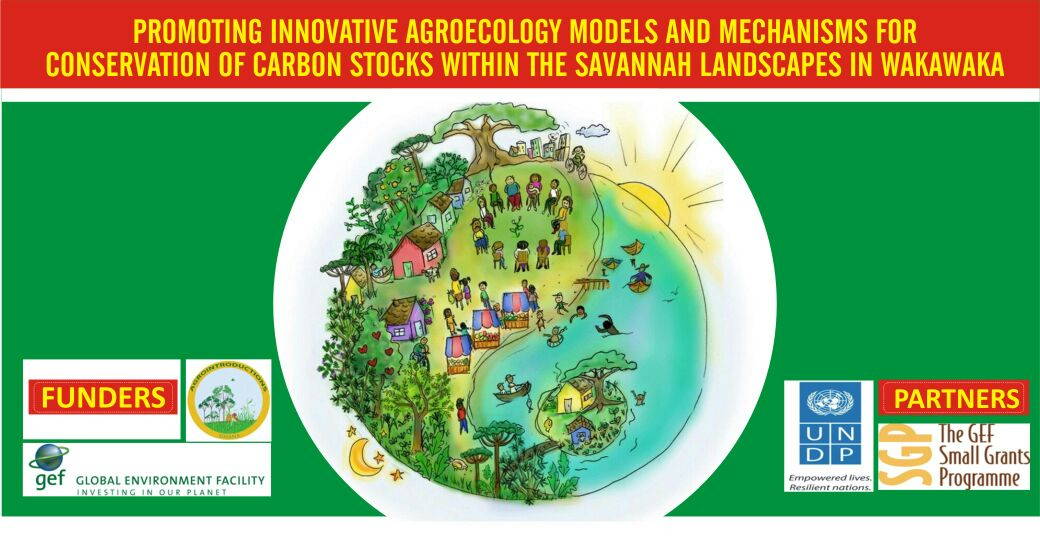
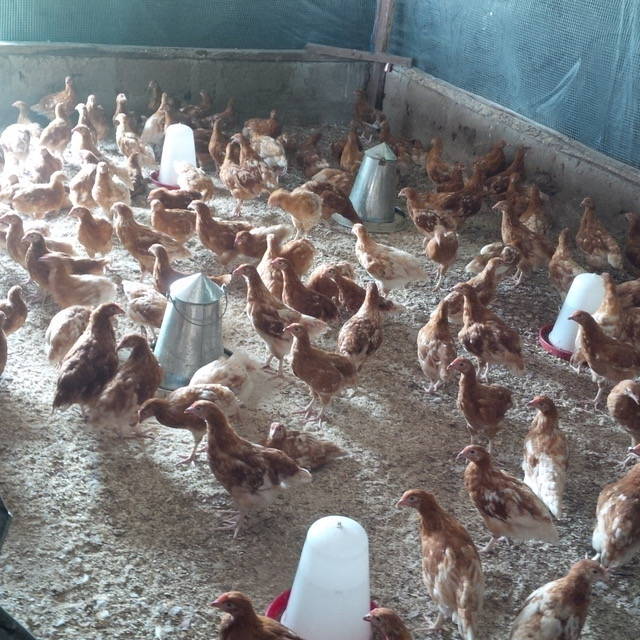
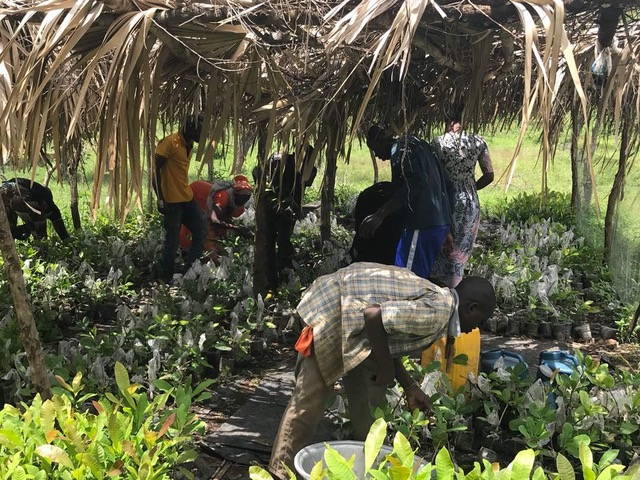
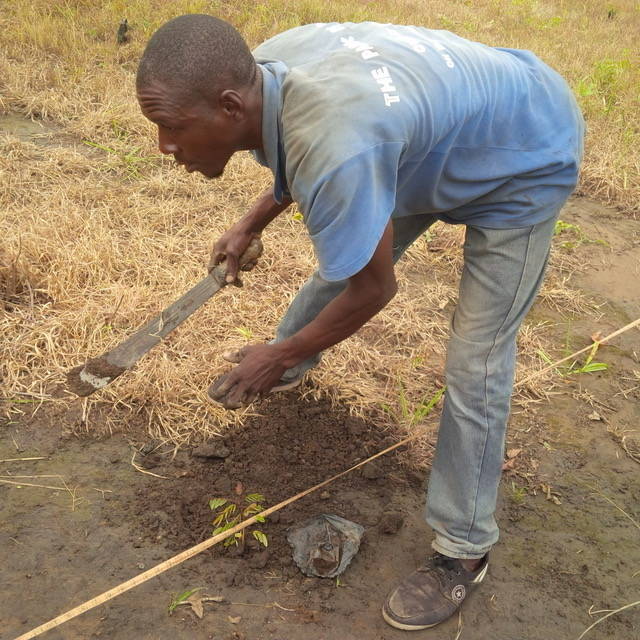
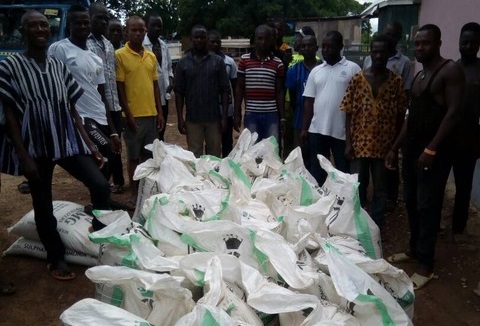
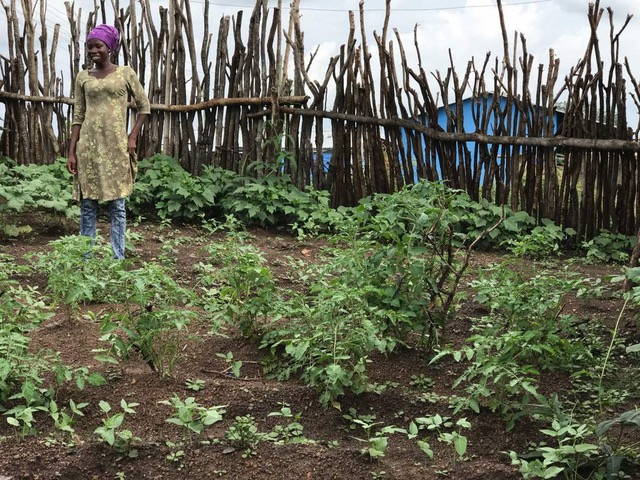
No Comments